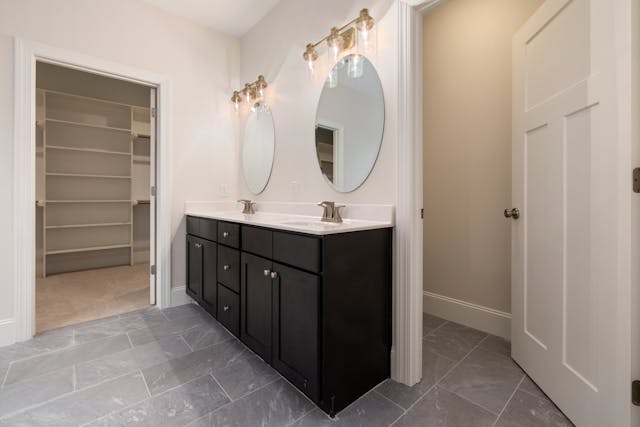5 Common Condo Bathroom Renovation Errors That Could Cost You Big
Introduction
A bathroom renovation is one of the most valuable upgrades you can make in a condo. It boosts property value, adds comfort, and enhances the aesthetic appeal of your space. But condo bathrooms come with their own set of challenges—space limitations, building rules, and shared systems, just to name a few.
One wrong move in your renovation can lead to major delays, fines from the condo board, or unexpected expenses. To save you from costly setbacks, we’re highlighting five of the most common condo bathroom renovation errors—and how to avoid them.
1. Skipping Condo Board Approvals
Why It’s a Problem:
Condo buildings have specific renovation guidelines. These often include noise restrictions, permitted materials, plumbing rules, and requirements for contractor insurance. If you start renovating without written approval, you could face:
- Fines from the condo board
- Mandatory removal of unauthorized work
- Delays from work stoppages
How to Avoid It:
Before doing anything, request your condo’s renovation package. Submit all required documents, including:
- Design plans
- Contractor license and insurance
- Scope of work and timeline
- Elevator booking and waste disposal plan
Get official written approval before demolition begins.
2. Ignoring Plumbing and Electrical Constraints
Why It’s a Problem:
Unlike single-family homes, condos have shared plumbing stacks and electrical systems. Moving toilets, showers, or drains may not be possible without major building-wide disruptions—or it might not be allowed at all. Tampering with these systems without approval can cause leaks, outages, or legal issues.
How to Avoid It:
Plan your remodel around existing plumbing and electrical layouts whenever possible. If changes are necessary:
- Hire a licensed plumber and electrician
- Ensure changes comply with local code and condo rules
- Schedule shut-offs with building management
Tip: Even switching from a tub to a walk-in shower may require approval depending on drain placement and slope requirements.
3. Underestimating Space and Storage Needs
Why It’s a Problem:
Condo bathrooms are often compact, and it’s easy to make choices that look good on paper but don’t work in real life. A vanity that’s too big, a door that opens the wrong way, or poorly placed fixtures can make your bathroom feel cramped and awkward.
Lack of storage also leads to clutter, which reduces both functionality and aesthetics.
How to Avoid It:
- Take precise measurements of every wall, door, and fixture
- Use space-saving solutions like floating vanities, pocket doors, or corner sinks
- Add vertical storage—open shelving, medicine cabinets, or recessed niches
Plan your layout for functionality first, then style second.
4. Choosing the Wrong Materials
Why It’s a Problem:
Not all materials are suited for high-moisture environments. Choosing the wrong type of flooring, paint, or grout can result in mold, mildew, or premature wear.
Some popular design trends—like natural wood vanities or matte-finish tiles—may look great in photos but perform poorly in a bathroom without proper sealing or ventilation.
How to Avoid It:
- Use water-resistant or waterproof materials such as porcelain tile, quartz counters, and marine-grade paint
- Avoid materials that warp, absorb water, or are difficult to clean
- Invest in high-quality grout and sealants to protect tilework
Always prioritize durability in a bathroom, especially one that may lack windows or ventilation.
5. Neglecting Ventilation and Lighting
Why It’s a Problem:
Many condo bathrooms don’t have windows, meaning they rely entirely on mechanical ventilation and artificial lighting. Inadequate exhaust fans can lead to moisture build-up, mold, and poor air quality. Poor lighting makes the space feel dark and uncomfortable, and can even pose safety hazards.
How to Avoid It:
- Install a high-quality exhaust fan rated for your bathroom’s size (look for models with humidity sensors or timers)
- Use layered lighting: overhead ambient lights, vanity/task lighting, and even accent lighting (like backlit mirrors)
- Choose LED bulbs for energy efficiency and longevity
Proper ventilation and lighting make the bathroom feel bigger, cleaner, and more inviting.
Bonus Tip: Not Hiring a Condo-Savvy Contractor
Even the best DIYer can struggle with the complexities of condo renovations. From elevator bookings to dealing with inspections, high-rise projects require specific expertise.
How to Avoid It:
Choose a licensed contractor who:
- Has experience working in condos
- Understands building bylaws and restrictions
- Communicates well with the condo board
Ask for references and photos from previous condo bathroom remodels before signing any contracts.
Conclusion: Plan Smart, Renovate Smarter
Bathroom renovations in condos can be transformative—but only when done right. By avoiding these five common mistakes, you’ll not only protect your budget but also ensure a smoother, faster, and more successful renovation.
To recap, remember to:
- Get condo board approval early
- Work within plumbing and electrical limits
- Design with space and storage in mind
- Choose durable, moisture-resistant materials
- Prioritize proper ventilation and lighting
With a smart plan and the right team, your condo bathroom remodel can add serious value to your home—and daily life.

